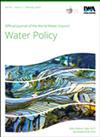农村饮用水供应计划实施过程中创造就业的潜力:印度 Jal Jeevan 计划的证据
IF 1.5
4区 环境科学与生态学
Q4 WATER RESOURCES
引用次数: 0
摘要
印度的政策制定者们发现,创造足够的就业机会以满足不断增长的人口的需求是一项挑战。投资大型公共基础设施项目是一个一直在使用的途径。2019 年,印度启动了 "Jal Jeevan 使命"(JJM),旨在为印度每个农村家庭提供饮用水。该任务强调对基础设施发展的大量投资,具有创造就业的巨大潜力。评估农村发展计划对就业影响的研究证据基础薄弱。在此背景下,我们对 JJM 在不同实施阶段创造就业的潜力进行了评估。我们利用印度各邦的二级和计划一级的原始数据,并使用投入产出模型和比率法来评估就业前景。我们的研究结果表明,JJM 有潜力在建设阶段创造平均 599 万人/年的直接就业和 2225 万人/年的间接就业,并在维护阶段每年创造 111 万人/年的额外直接就业。我们的研究强调了公共投资以创造就业机会的形式产生的溢出效应,并表明一旦该计划完成并投入运行,"联合司法机制 "可能会产生巨大的影响。本文章由计算机程序翻译,如有差异,请以英文原文为准。
Employment generation potentials in the implementation of a rural drinking water supply program: evidence from India's Jal Jeevan Mission
Policymakers in India are finding it challenging to generate adequate employment to meet the requirements of the growing population. An avenue consistently used is to invest in large-scale public infrastructure projects. In 2019, the Jal Jeevan Mission (JJM) was launched with the aim of providing potable drinking water to every rural household in India. Underscoring the large investments in infrastructure development, the mission holds significant potential to create employment. The evidence base of studies assessing the effect of rural development programs on employment was weak. In this backdrop, we assessed the employment generation potentials of JJM at various phases of its implementation. We utilized secondary and scheme-level primary data across the states of India and used the input–output model and ratio method to assess employment prospects. Our results suggest that JJM has the potential to generate an average of 5.99 million person-years of direct and 22.25 million person-years of indirect employment during the construction phase, and 1.11 million person-years of additional direct employment annually during the maintenance phase. Our study highlights the spillover effects of public investments in the form of employment generation and indicates that the impact of JJM is likely to be substantial once the program is complete and operational
求助全文
通过发布文献求助,成功后即可免费获取论文全文。
去求助
来源期刊

Water Policy
环境科学-水资源
CiteScore
3.10
自引率
12.50%
发文量
81
审稿时长
6-12 weeks
期刊介绍:
Water Policy will publish reviews, research papers and progress reports in, among others, the following areas: financial, diplomatic, organizational, legal, administrative and research; organized by country, region or river basin. Water Policy also publishes reviews of books and grey literature.
 求助内容:
求助内容: 应助结果提醒方式:
应助结果提醒方式:


